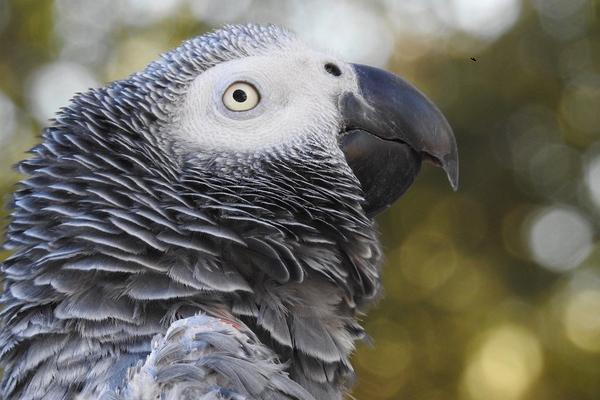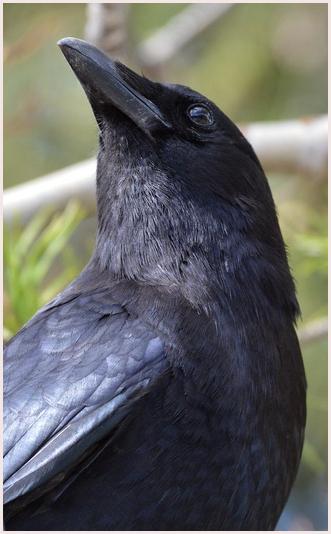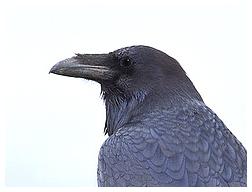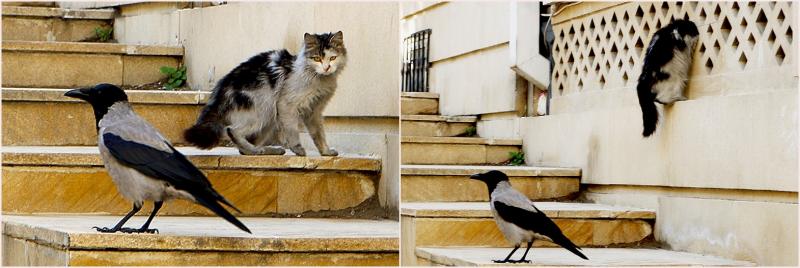5. Bird Brains - High Flyers
Having looked at generic skills shared by many or most avian species, we move to the serious intellectuals of the bird world. There is plenty of evidence from the field and from controlled experiments of birds achieving high levels of performance in tasks that require unusual adaptive behaviour.
The Heron Family
We start with the heron family who provide an astonishing example of tool use by animals. Striated herons in Japan have been recorded bait fishing with live insects, crackers, twigs, berries casting them on the water and waiting patiently for hungry fish to be tempted close enough for them to strike.

Striated Heron (Butorides striata)
The striated heron above, photographed in Krabi, Thailand, was stalking mud skippers in a tidal river estuary. The small shoal was too agile for the heron and kept scurrying away but remained tantalising close. It resorted to running after them which was equally unsuccessful. Perhaps a spot of bait fishing needed?
Striated herons have even been shown to trim twigs with their beaks to the right size and shape.
The Green Heron
A close American relation in the same genus, butorides, as the striated heron, the green heron, shown below, uses bread to catch fish. This is probably a learnt behaviour possibly acquired through observations of fishermen or from other herons.
https://www.youtube.com/watch?v=kSClutBjeHk
Note the very deliberate way in which the heron takes small pieces of bread from the larger chunk and spreads them over the water to give several opportunities to lure fish. The success rate is high.The film that follows in the link shows a black-crowned night heron engaged in similar behaviour but with more human intervention. The capacity to use bait tools in this way is both impressive and unique.
Coromorants
Next we look at cormorants (Phalacrocorax) which for centuries have been used by Japanese and Chinese fisherman to catch fish. There are two species of cormorant involved: the Japanese cormorant and the great cormorant (below). I have sought in vain for more than one account that would confirm the validity of this 1970's story although the witnesses are considered reliable. Apparently, great cormorants trained to fish in China expected a fish meal having caught seven fish for their keepers and refused to dive again unless the rings that restricted their throats were loosened so they could swallow their next fish. The conclusion: cormorants can count up to seven! If true, it is a remarkable achievement that puts them in first position as far as avian numeracy is concerned.

Great Cormorant (Phalacrocorax carbo)
An avian Pythagoras ponders the meaning of life, the universe and everything. After all, 42 is divisible by 7. Photographed from Brixham Breakwater, South Devon, United Kingdom.
The Corvids and Parrots
There seems to be a consensus that members of the corvidae family and the psittaciformes order are the cleverest birds having the largest brains with some parts resembling their human equivalent. Covids, as the former are called, include crows, ravens, magpies and jays. The latter are commonly known as parrots and are the most threatened group of birds in the world due to habitat loss and their demand in the pet trade.

African Grey Parrot (Psittacus erithacus)
Parrots and Language
Parrots have the proven ability to mimic human speech but there are many other examples of bird mimics, although they usually restrict themselves to other species of birds. What makes grey parrots special is their demostrated ability to form simple sentences and relate words to their meanings. This a very high order skill for a animal that has no need to prove itself in human terms but has evolved a brain that provides it with unique abilities in the wild. Researchers have shown that parrots can develop individualised calls recognised by other grey parrots and hold conversations with other members of a flock. They may also learn language in a similar way to humans. These are formidable advantages in a competitive environment enabling them to share detailed information about, for instance, food sources and potential dangers.

Carrion Crow (Corvus corone)
Crows and Problem Solving
Crows and other corvids may be the best problem solvers. An experiment in Oxford with seven captive crows required them to use three tools in a sequence involving eight stages in order to reach food. Five of the crows were successful without any previous training. Here is a link to a film of a crow completing the task.
https://www.youtube.com/ watch?v=cbSu2PXOTOc
Why are Corvids Clever?
Incredible! This is at least on a par with chimpanzee intelligence. Why have corvids developed such problem solving skills? There appears to be a set of conditions applicable to mammals as well as birds, that lead to the evolution of complex cognition: large brain size relative to body size, long development period, omniverous diet, variable habitat, including contrasting weather conditions, gregarious nature and long life span. In condtions where food supply is inconsistent at best, initiative, flexibility and innovation are rewarded and the best problem solvers the most successful. Altricial chicks with long developmental periods and continued support after they leave the nest have the best chance to exploit greater cognitive ability with more opportunity to learn from adult birds, both their parents and other gregarious members of the rookery or flock.
Parrot Anomalies
This evolutionary model for advanced cognition seems at odds with parrots that thrive in a tropical and subtropical environments which lack many of the conditions described above. However, they are gregarious and the chicks are altricial and they have, for what ever reason, developed large brain size.

Raven (Corvus corax)
Ravens and Theory of Mind
Another corvid that can be described as an intellectual high flyer, the raven, anticipates what other ravens may be thinking, an advanced cognitive ability explained in the concept known as "Theory of Mind". Without going into too much detail, experiments involve ravens hiding food with and without the possibility of observation by other ravens. When conditions enable observation by possible competitors, the food is hidden more quickly and with far fewer checks later to ensure its safety, a strategy aimed at ensuring that attention isn't drawn to the food cache. This demonstrates awareness of motive and intent in other ravens, a higher order skill, previously reserved for homo sapiens and other primates. A study led by researchers at Lund University in Sweden demonstrated that ravens can be as clever as chimpanzees, despite having much smaller brains. Intelligence is to do with neuronal density and the structure of the brain rather than brain size.
The Great Minds of the Bird World
In conclusion there is plenty of empirical evidence that corvids can solve complex problems, use tools, can hide and store food across seasons, have efficient memory, cut food to chick-size portions and use their own behaviour to predict the behaviour of conspecifics. They can also strategise in packs in order to hunt and repel predators such as raptors. They are not the most colourful spectacle in the bird world but they are amongst the most successful proving yet again that intelligence not looks has the advantage, certainly in the longer term.
Brain Beats Brawn
I conclude with two photographs taken in the Old City, Baku, Azerbaijan of a one-eyed alley cat and a hooded crow. When I first saw them I was sure an old feline warrior would be more than a match for a crow. But look who beat a hasty retreat. Had they met before? If so, I suspect that superior intellect had prevailed over teeth and claws.
